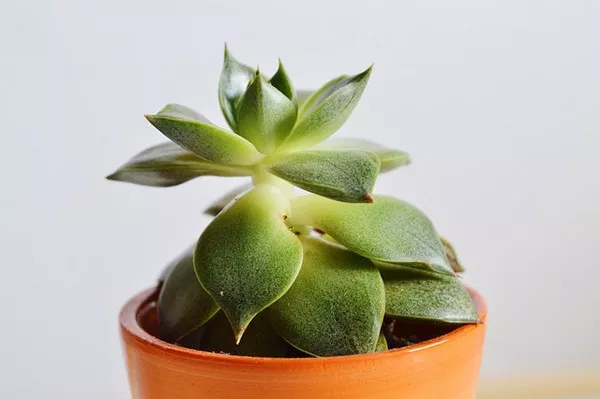Succulents, with their captivating beauty and remarkable ability to adapt to diverse environments, have become increasingly popular among gardening enthusiasts. As succulents thrive and grow, it is common for leaves to naturally fall off due to various factors. Rather than discarding these fallen leaves, this article explores innovative and eco-friendly ways to make the most of them. From propagation techniques and DIY projects to sustainable practices, discover how to transform these fallen leaves into new succulent life and unique creations.
Succulents, known for their water-storing capabilities and captivating appearance, have captured the hearts of both seasoned gardeners and beginners alike. As resilient plants, they possess a fascinating ability to propagate and regenerate, often shedding leaves as part of their natural growth process. Instead of viewing fallen succulent leaves as waste, we can embrace their potential and explore ways to utilize them in sustainable and creative ways.
Understanding Fallen Succulent Leaves:
When succulents grow and flourish, they generate new growth through propagation, a process where leaves naturally fall off or are removed for specific purposes. Propagation occurs primarily through two methods:
1. Leaf Propagation:
Certain succulent species, such as Echeveria, Sedum, and Graptopetalum, readily produce new plants from fallen leaves. These leaves contain specialized cells that facilitate root and shoot formation, allowing them to grow into new succulent plants under suitable conditions.
2. Beheading Propagation:
Some succulents, like certain varieties of Euphorbia and Aeonium, can be propagated by beheading. In this method, the top portion of the plant is removed and allowed to callus before planting. New growth emerges from the cut end, producing new plants.
Propagation Techniques for Fallen Leaves:
1. Leaf Propagation Process:
To propagate succulents from fallen leaves, follow these steps:
Step 1: Gently remove healthy leaves that have fallen naturally from the plant, ensuring that the entire leaf is intact.
Step 2: Allow the leaves to dry and callus over for a day or two. This helps prevent rot when they are placed in the soil.
Step 3: Prepare a well-draining soil mix suitable for succulent propagation.
Step 4: Lay the dried leaves on the soil surface, ensuring they make good contact with the soil without being buried too deep.
Step 5: Water the soil lightly to promote root growth, but be cautious not to overwater as succulents prefer drier conditions.
Step 6: Place the container in a location with indirect sunlight, providing optimal conditions for leaf propagation.
Step 7: With time, new baby plants, known as “pups,” will emerge from the base of the leaves. Allow them to grow and develop before transplanting them into individual pots.
2. Beheading Propagation Process:
To propagate succulents through beheading, follow these steps:
Step 1: Using a clean, sharp knife or scissors, make a clean cut above a set of healthy leaves on the main plant. The cut end should be allowed to callus over for a few days.
Step 2: Prepare a well-draining soil mix and plant the beheaded portion in a new container.
Step 3: Water the soil lightly, ensuring the new plant receives proper hydration without becoming waterlogged.
Step 4: Place the container in a location with indirect sunlight to encourage the emergence of new growth from the cut end.
Step 5: Once new growth appears, treat the beheaded plant as a mature succulent, providing it with the same care as established plants.
Creating DIY Projects with Fallen Succulent Leaves:
1. Succulent Leaf Wreaths:
Repurpose fallen succulent leaves into a stunning succulent leaf wreath. Use a foam wreath base, floral pins, and the dried succulent leaves to create a beautiful and long-lasting wreath. The wreath can be displayed indoors or outdoors and will add a touch of natural elegance to any space.
2. Succulent Leaf Wall Art:
Transform fallen succulent leaves into an exquisite piece of wall art. Arrange the dried leaves on a canvas or a wooden frame to create a captivating succulent-inspired design. The wall art will bring the beauty of nature indoors and serve as a unique focal point in any room.
3. Pressed Succulent Leaf Cards:
Preserve the beauty of fallen succulent leaves by pressing them between sheets of paper or using a flower press. Once dried, adhere the pressed leaves onto blank cards to create personalized and eco-friendly greeting cards for various occasions.
4. Succulent Leaf Potpourri:
Dry fallen succulent leaves and mix them with aromatic herbs, flowers, or essential oils to create a delightful succulent leaf potpourri. The potpourri can be placed in small sachets and used to freshen drawers, closets, or rooms naturally.
Sustainable Practices with Fallen Succulent Leaves:
1. Composting:
If fallen succulent leaves are not suitable for propagation or DIY projects, consider composting them. Composting organic material helps reduce waste and enriches the soil with nutrients, supporting a sustainable gardening practice.
2. Community Swaps:
Organize a succulent leaf exchange with fellow gardeners or within the local gardening community. This way, fallen leaves can find new homes and be transformed into thriving succulent plants under the care of other enthusiasts.
3. Plant Donations:
Share the joy of gardening and sustainability by donating propagated succulents to friends, family, or community spaces. These new plants will continue to grow and propagate, contributing to a greener and more sustainable environment.
Conclusion:
The beauty and versatility of succulent plants extend beyond their vibrant colors and unique forms. Fallen succulent leaves possess tremendous potential for propagation and creative projects, breathing new life into these resilient plants. By embracing sustainable practices and innovative DIY projects, we can honor the innate resilience of succulents while minimizing waste and contributing to a greener world. As we cherish each fallen leaf and nurture them into thriving new succulent life, we foster a deeper connection with nature and its remarkable ability to rejuvenate and renew.


